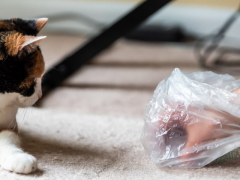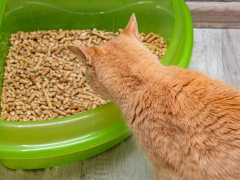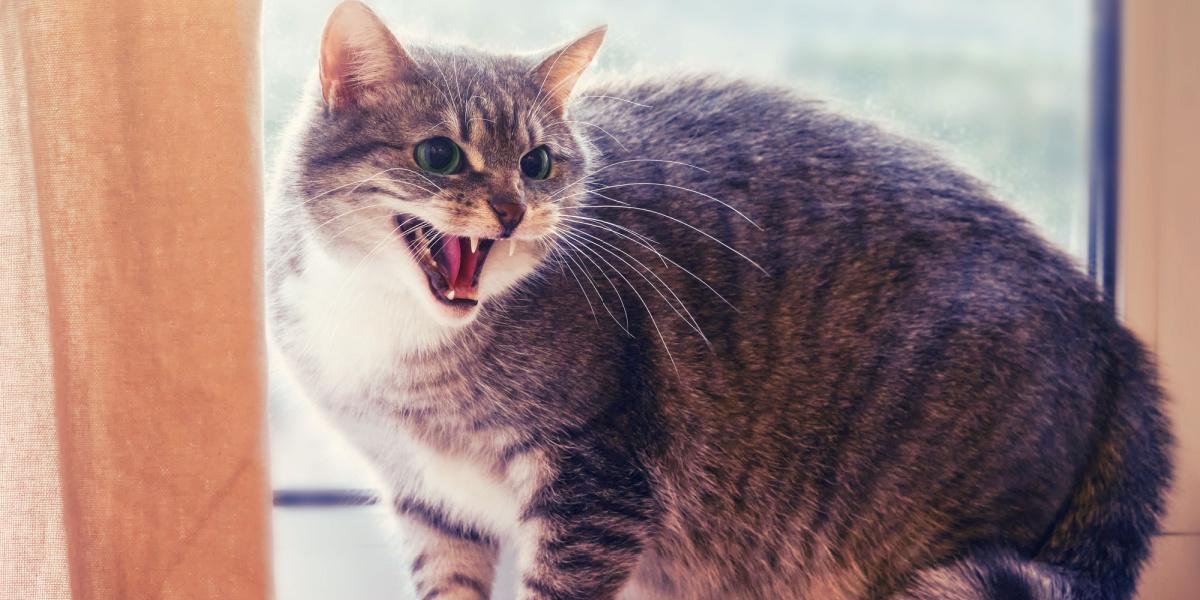
Aggression in cats is a major problem that can result in injury to humans and pets. Although feline aggression towards humans isn’t frequently reported as dog attacks, it’s a significant challenge for cat owners, a public health concern, and an issue that, unfortunately, often leads to relinquishment.
Let’s reshape our thoughts on aggression and decode what motivates cats as species to behave ‘aggressively’ towards humans, each other, and other pets. In addition to learning about why cats may seem aggressive, we’ll discuss methods to tackle that animosity for a more harmonious home.
What Is Aggression in Cats?
Aggression is described as a warning or attack that’s directed toward one or several individuals: either intraspecific (same species) or interspecific (different species).
Aggression is an innate response in cats that is essential for their survival as territorial, self-reliant predators. Aggression can be normal or abnormal depending on the context, but generally, it’s associated with a pet’s self-preservation and correlated with fearfulness.
Deciphering Aggression
Aggression isn’t a diagnosis or a temperament trait!
The emotions feline’s experience stem from their inherited brain often referred to as “emotional motivations”, which are responsible for instinctual expressive arousal.
Aggressive behaviour can be interpreted by the receptive motivation that reinforces it (Halls, 2020).
According to Panksepp, negative arousal is associated with:
- Frustration
- Fear-anxiety
- Panic
Hostility could also be exhibited in several circumstances. True hostility may be passive (covert) or active (overt).
Since several forms of aggression may cause the same growling, swiping, scratching, and occasional use of teeth and claws, it can take some time to classify the type of aggression you’ve witnessed.
Aggression Classifications
Cats may display aggressive behaviour due to several motivators. It’s important to differentiate the type of aggression to manage it effectively.
Aggression Towards Humans
Unprovoked aggression in cats towards humans is usually related to felines being handled or played within the home. Sadly, most attacks are directed toward family members, one study indicated that it occurs more frequently against children and women.
While scientific research into the impact of the queens prenatal (before birth) and postnatal (after birth) stress together with weaning on behavioural development of kittens continues, it’s been found that intense prenatal stress exposure can result in a heightened sensitivity plus reactivity to stressors whereby kittens may have a diminished ability to handle traumatic situations and may demonstrate intensified emotionality in the form of abnormal levels of fear and unprovoked aggression.
Furthermore, a recent study uncovered that early experiences and premature weaning can increase aggression and stereotypic behaviour in cats.
Hand-reared kittens may not learn the way to handle frustration as they’re not weaned by their queens despite the best efforts by their carer; for few individuals this could lead to problem behaviour like frustration-related aggression.
Aggression cases towards people must be individually evaluated along with a vet examination by taking detailed case history of the cat, its environment including initial trigger and problem progression. The course of action will vary for everybody based on causal factors and situations.
Let’s examine the six main reasons for aggressive behaviour occurrence towards humans including successful management and prevention techniques:
1. Fear Aggression
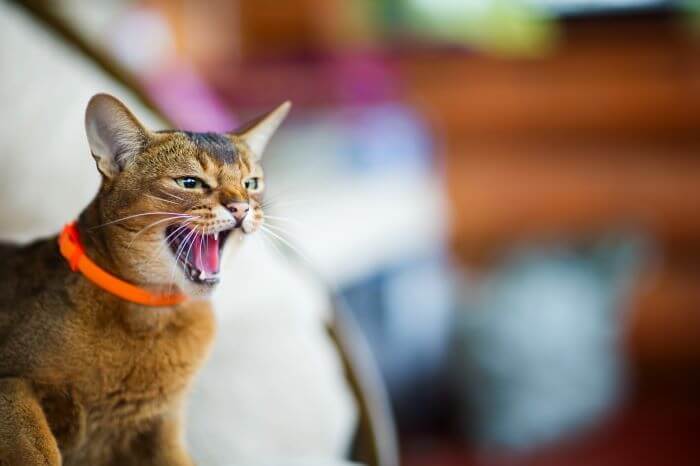
Frightened cats may exhibit aggressive behavior. Cats who’ve been poorly socialized are more prone to this type of fear-based aggression.
Although some cats are more fearful than others mostly because of poor human socialisation during the sensitive kitten period (2-8 weeks) this sort of fear-anxiety antagonism relates to a cat confronted with brand-new stimuli like novel people, additional pet, unfamiliar or unpleasant situation and negative experiences.
Fear-based aggression may increase if the owner associates with another stimulus the cat is anxious about.
As an example, this may occur when an owner handles another cat, then approaches his cat. The scent of the unknown cat may spark aggression toward the owner.
A cat that feels threatened may exhibit defensive behaviour when approached.
The cat’s stance will include crouching to the ground, flattened ears behind their head combined with possible piloerection whilst their response may include vocalisation as a warning sign to back off, biting and or scratching according to the level of alleged danger and arousal.
Don’t try to comfort your cat physically while he’s fearful since it could lead to injuries and worsen his panic.
Shifting frightful behaviour requires lots of persistence since each individual cat responds inversely.
Supply lots of hiding spots for the cat to get away, and combine those hiding opportunities with structured interactions. Forced contact with new people or pets should be avoided whilst a mix of desensitization techniques and behaviour modification will ultimately diminish fearfulness.
2. Play/Predatory Aggression
Misdirected play/predatory attention-seeking behaviour manifests as pouncing followed by a fast attack of hands and feet. Most prevalent cause develops through inappropriate interaction by owners who play with kittens using their hands. The kittens get over-stimulated and play roughly nevertheless pet owners take no steps to curb the behaviour.
Although kittens often play boisterously with other kittens or cats, the queen will teach her descendants to soften their play. Adult cats that haven’t been taught as kittens to restrain their responses may play too aggressively with people.
Some cats may additionally ‘ambush’ their owners as they walk past by pouncing from behind furniture and swiping their feet. Often this behaviour is reinforced by the owner’s response of pulling limbs away or running similarly to prey movement which inspires predatory responses.
To prevent misplaced play/predatory aggression teach kittens to play appropriately from a young age by redirecting onto inanimate objects like ping pong balls, ‘fishing rod’ toys where an individual moves a wand, but the cat chases the toy on the end of the wand rather than limbs.
Furthermore, enrich your kitty’s environment with daily play sessions. Provide several climbing plus exploration choices, problem-solving opportunities together with outdoor access if feasible.
Avoid punishment and remain calm and unresponsive. Walk off to avoid reinforcing the grasping behaviour.
3. Petting Induced Aggression
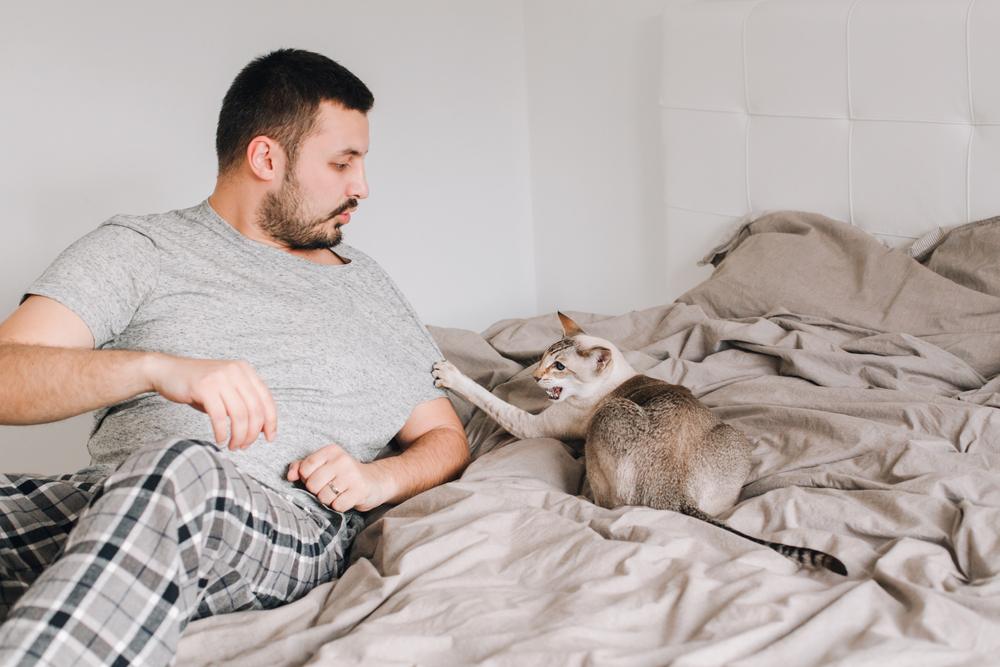
Some cats may become overstimulated during a petting session and lash out with bites and scratches. Other cats will reach a “tipping point” after sensitive areas have been touched for too long.
For a loving pet owner, this kind of enmity could seem deceptive and infuriating particularly since your cat may solicit attention then unexpectedly stop the interaction with biting or scratching.
This is common when a cat wants to have social contact however not plenty of high-intensity interaction like stroking in several places over his body or heavy-handed patting. A friendly adult cat may enjoy gentle stroking for brief periods when he or she desires it, though will easily get frustrated or aroused and may strike out with biting the owner’s hands.
A cat may additionally develop a sense of conflict between pleasure and danger if they become too relaxed. This may lead to a sudden violent gesture. Again, these cats are responding to an inborn survival mechanism intended to protect them from threats.
To manage a moggie who gets easily agitated or aroused, owners should look out for the cat’s subtle warning signs and avoid extended pampering sessions or petting in parts of their body that creates vulnerability (belly, chest, or back).
4. Pain Induced Aggression
A cat that’s ill may lash out inadvertently due to lower tolerance threshold since most frequently they experience pain, distress and irritation. An aggressive response of a cat in discomfort is possibly because of anticipation or experience of pain when touched which is context related.
Common illnesses related to aggressive behaviour include degenerative joint disease (DJD), hyperthyroidism, dental ailment and neurological disorders.
Discomfort management options should include vet consultation, pain control, complementary therapies and avoidance of touching painful body parts in cases of DJD.
5. Redirected Aggression
When a cat is frustrated or agitated by a stimulus unable to achieve desired outcome, he or she may respond by ‘redirecting aggression’ towards the target (i.e. human or another pet) in vicinity instead of the source.
Typical causes include seeing another cat from the window, unable to chase it off because its locked inside or when an owner picks up a cat while he’s in a midst of inter-cat fight. Likewise, a cat getting frightened by sudden excessive noise can cause agitation resulting in redirected resentment.
To prevent thwarting try identifying the cause of the stress and remove it if conceivable. If the source is another moggie, pulldown curtain or attach opaque film to the lower part of a full-length window. In multi-cat houses enrich the cat’s environment with unrestricted access to all or any resources and offer outdoor time. Cats are sensitive to change, keep the environment freed from loud noises and rowdy visitors.
6. Maternal Aggression
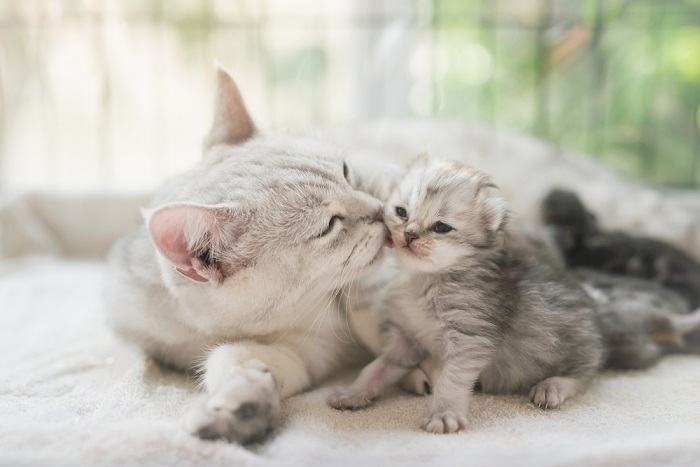
Mother cats may become extremely protective and violent towards anything they view as a potential threat to their kittens.
Although maternal aggression is less common, certain queens nursing offspring’s postnatal period may demonstrate ferociousness toward certain individuals’ approach.
To minimise aggression and reduce stress on the queen including kittens; keep guests to a minimum, provide a quiet stress-free nesting site and minimise nest scent disruption. Always carefully observe the queen’s behaviour when anyone handles her offspring to make sure she is comfortable with their presence.
Lastly, Let’s Look at a Common Problem Multi-Cat Households Face Today
In addition to aggression towards humans, cats in multi-cat households may exhibit aggression towards other cats.
Inter-Cat Aggression
Inter-cat aggression can be categorised as conflict-related, fear correlated, play associated and redirected, triggered by the presence of another cat or separation of residents thanks to hospitalisation.
Although many cat owners believe the more cats the merrier, felines are solitary, territorial species who don’t normally accept newly adopted cats into a household. Disputes between cats are commonplace explicitly when individuals aren’t related or socialised together during the sensitive period.
It’s been reported that cat-cat conflict within the same home appears a minimum of once a month. It’s often subtle frequently resulting in feline distress and behavioural challenges. Anecdotally a cat that’s frequently victimised by being obstructed to essential resources may suffer from chronic stress which successively might increase the risk to idiopathic cystitis or alopecia.
The queen’s social contact along with her offspring is crucially valuable for normal emotional and behavioural development. Kittens completely deprived of maternal care have demonstrated to be at higher risk of developing fearful or aggressive responses to other cats similarly shown diminished learning abilities (Seitz, 1959).
To prevent assaults in multi-cat households, gradual introductions should be made if adopting a brand-new cat. Numerous studies suggest that early exposure and positive interactions with other felines during the sensitive period are particularly critical in encouraging greater acceptance to other pusses including formation of social bonds later in life. Likewise, pheromone products can help minimise hostility and aid during introductions.
Prevention of inter-cat conflict requires environmental adjustments geared toward promoting cat distribution, decreasing resource competition while reducing distress, irritability, negative emotions and increasing a cat’s self-confidence.
Conclusion
Any sort of aggression is dangerous and a significant challenge for pet owners. Although classifications differ, aggression is typically associated with fear, frustration, misdirected play or ailment.
Various varieties of aggression are often treated with behavioural and environmental modification; however, most will initially require a veterinary visit to rule out a medical condition.
Aggression is often challenging to diagnose and treat hence it’s vital to seek professional help from a Qualified Animal Behaviorist who can develop a customised treatment plan for your feline companion.
Also Read: The 10 Best Cat Slow Feeders & Puzzle Feeders
-
Care, I. C. (2020, September 01). Reproduction, behavioural development and behavioural health in kittens. Advanced Feline Behaviuor for Vet Professionals. United Kingdom: International Cat Care. Retrieved April 25, 2021
-
Halls, V. (2020). ‘I’m not bad, I just do bad things!’: Reframing our thoughts on aggressive cats. ISFM International Congress (pp. 1-6). ISFM. Retrieved April 15, 2021
-
Heath, I. R. (2016). Feline Behavioral Health and Welfare. St Louis, MO: Elsevier. Pg 16, 75-78, 192-193, 244, 293-294, 327, 346-375, 376-382 Retrieved April 26, 2020
-
Helen Tuzio, T. E. (2004). FELINE BEHAVIOR GUIDELINES. (A. A. Practitioners, Compiler) USA: AAFP. Retrieved April 27, 2021
-
Moesta, A., & Crowell-Davis, S. (2011). Intercat aggression – general considerations, prevention and treatment. (D. o. Behavior Service, Compiler) Georgia, United States: University of Georgia. Retrieved April 20, 2021
-
NSW, C. P. (2019). Feline Aggression. Newtown, NSW, Australia. Retrieved April 24, 2021, from https://catprotection.org.au/cat-care-factsheets/factsheet-feline-agression/
-
Ramos, D. (2019). Aggression in multi-cat households. Journal of Feline Medicine and Surgery, 21, 221-233. Retrieved April 10, 2021
-
Care, I. C. (2018, September 26). Aggression between cats. UK. Retrieved April 27, 2021, from https://icatcare.org/advice/aggression-between-cats/
-
Care, I. C. (2018, September 26). Aggression to humans. (ICatCare, Compiler) UK. Retrieved April 10, 2021, from https://icatcare.org/advice/aggression-to-humans/
-
Rodan, I. (n.d.). Multi-Cat Household: Introducing a New Cat and Intercat Aggression. Madison, WI, United States. Retrieved April 26, 2021
